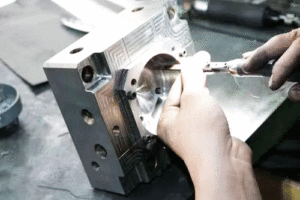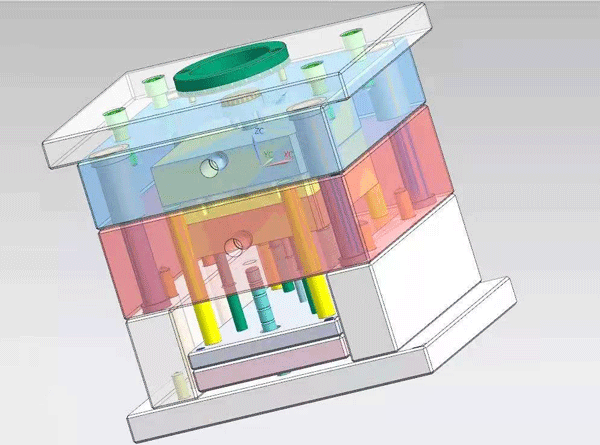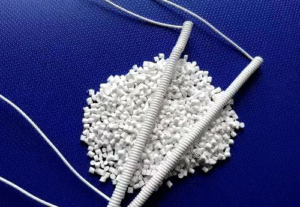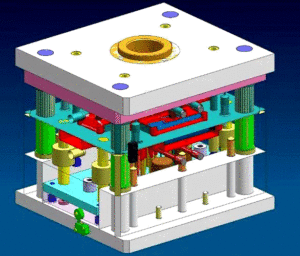
Standard Injection Mold Development Process
Guide on the Injection Mold Development
In general, the standard injection mold development process includes the following 4 steps:
- Mold drawing
- Proofreading and reviewing drawings
- Trial and repair
- Organize data for archiving
1. Mold drawing
Before drawing the general assembly drawing of the mold, we should draw the process drawing. And it should meet the requirements of the parts drawing and process data. The size guaranteed by the next process should be marked with the words “process size” on the drawing. If no other mechanical processing is performed after forming except for repairing burrs, then the process drawing is exactly the same as the part drawing.
It is best to mark the part number, name, material, material shrinkage rate, drawing scale, etc. below the process drawing. Usually, the process is drawn on the mold assembly drawing.
The general assembly drawing should be drawn in a ratio of 1:1 as far as possible, starting from the cavity. And then, draw the main view and other views at the same time.
The mold assembly drawing content
- Mold forming part structure.
- Structural form of pouring system and exhaust system.
- Parting surface and parting pick-up method.
- The external structure and all the connecting pieces, the location of the positioning and guiding pieces.
- Mark the cavity height size (optional) and the overall size of the mold.
- Auxiliary tools (Pick-up and unloading tools, calibration tools, etc.).
- Write out all the part numbers in sequence and fill in the detailed list.
- Label technical requirements and instructions for use.
Technical requirements for mold assembly drawing
- Performance requirements for certain systems of the mold.
For example, the assembly requirements for the ejector system and the slider core-pulling structure.
- Requirements for mold assembly process.
For example, after the mold is assembled, the bonding gap of the parting surface should not be greater than the parallelism requirements on the upper and lower sides of the 0.05mm mold. Besides, we should also point out the size determined by the assembly and the requirements for the size.
- Methods for mold use, assembly and disassembly.
- Anti-oxidation treatment, mold number, lettering, marking, oil seal, storage and other requirements.
- Requirements for mold testing and inspection.
The order of dismantling and drawing the parts drawing according to the general mold assembly drawing
- inside first, then outside
- complicated first, then simple
- forming parts first, then structural parts.
Drawing requirements
① Graphic requirements
Draw to scale, allowing zooming in or out. The view selection must be reasonable, the projection correct, and the layout appropriate. In order to make the processing patent number easy to understand and easy to assemble, the graphics should be as consistent as possible with the general assembly drawing. More importantly, the graphics should be clear.
② The dimensioning requirements should be unified, centralized, orderly and complete
The order of dimensioning is as follows:
First, mark the main part size and draft slope. Then mark the matching size and all the dimensions. On the non-main parts drawing, first mark the mating dimensions, and then mark all the dimensions.
③ Surface roughness
Mark the most applied roughness on the upper right corner of the drawing, such as “Rest 3.2.” Mark other roughness symbols on each surface of the part.
④ Other content
For example, part name, mold drawing number, material grade, heat treatment and hardness requirements, surface treatment, graphic scale, machining accuracy of free size, technical description, etc. should be filled in correctly.

2. Proofreading and reviewing drawings
(1) The relationship between the drawings of the mold, its parts and the plastic parts
Whether the material, hardness, dimensional accuracy and structure of the mold and mold parts meet the requirements of the plastic parts drawings.
(2) Plastic parts
- Whether the flow of plastic flow, shrinkage cavity, weld line, crack, demoulding slope, etc. affect the performance, dimensional accuracy, surface quality and other requirements of plastic parts.
- Also, check whether the pattern design is insufficient,the processing is simple, and the shrinkage rate of the molding material is selected correctly.
(3) Forming equipment
- Whether the injection volume, injection pressure, and clamping force are sufficient.
- Ifthere are problems with the installation of the mold, the south core of the plastic part, and the demouldin
- Also, whether the nozzle of the injection machine is in correct contact with the mouth sleeve.
(4) Mold structure
A. Whether the position of the parting surface and the finishing accuracy meet the requirements.Ifthere will be overflow, and whether the plastic parts can be guaranteed to stay on the side of the mold with the ejector after the mold opening.
B. Whether the demoulding method is correct. Ifthe size, position and quantity of the promotion rod and push tube are appropriate. Whether the push plate will be stuck by the core, andthen cause scratches on the molded parts.
C. Mould temperature regulation
①The power and quantity of the heater. ②The location, size and quantity of the cooling medium flow line.
D. The method of dealing with the undercut madeof plastic parts.
Whether the mechanism for removing the undercut is appropriate. For example, whether the slider and the push rod in the core-pulling mechanism of the inclined guide column interfere with each other.
E. Whether the location and size of the pouring and exhaust systems are appropriate.
(5) Design drawings
A. Whether the placement of the mold parts on the assembly drawing is appropriate.Clearly indicatedor any omissions?
B. Whether the following points are marked and described clearly.
The part number and name on the part drawing / the production quantity / made in-house or outsourced / standard or non-standard / the matching processing accuracy of the parts / the correction processing and allowance of the high-precision dimensions of the molded plastic parts. the material / heat treatment / surface treatment / surface finish of the mold parts
C. Whether theworking size and matching size of the main parts and forming parts are correct.
D. Check the view position of all parts drawings and general assembly drawingsandprojection. Then, check whether the drawing method conforms to the national drawing standard. And if there are any missing dimensions.
(6) Check processing performance
Whether the geometry, view drawing, dimensioning, etc. of all parts are conducive to machining.
(7) The main working size of the auxiliary tool for recalculation
A. In principle, professional proofreading is carried out according to the designer’s self proofreading project. However, it should focus on structural principles, process performance and operational safety. When drawing, first digest the graphics, draw according to the requirements of the national standard. Then,fill in all the dimensions and technical requirements, self-study and sign after tracing.
B. Submit the sketched base map to the designer for proofreading and signature.Generally, the relevant technical personnel of the tool manufacturing unit will review, countersign and check the manufacturing process before sending it for drying.
(8) Write a manufacturing process card
The manufacturing process card is written by the technicians of the tool manufacturing unit and prepared for processing.
In the manufacturing process of mold parts, we should strengthen the inspection, and place the focus of inspection on the dimensional accuracy. After the mold is assembled, the inspector will inspect it according to the mold inspection table. The main thing is to check whether the performance of the mold parts is good. Only in this way can the manufacturing quality of the mold be guaranteed.
3. Trial and repair
The mold design is carried out under the expected process conditions when selecting molding materials and molding equipment But people’s knowledge is often imperfect. After completing the mold processing, we must carry out a mold trial test to see how the quality of the molded parts is. After discovering the errors, we must repair the mold at once.
There are many types of bad phenomena in plastic parts with the complicated reasons. There are reasons for the mold and the process conditions, which are often related to each other.
Before repairing the mold, we should carry out a detailed analysis and research according to the actual situation of the bad phenomena in the plastic parts. And then find out the remedy methods after knowing the reasons for the defects of the plastic parts. Because the molding conditions are easy to change, the general practice is to change the molding conditions first. And only consider repairing the mold if changing the molding conditions cannot solve the problem.
Repairing the mold should be more cautious. The reason is that once the mold conditions are changed, major modifications and restorations cannot be made.
Only by ensuring the good performance of the parts can the manufacturing quality of the mold be guaranteed.
4.Organize data for archiving
After the mold is tested, if it is not used temporarily, it should completely wipe off the mold release residue, dust, oil, etc.. Then, apply grease or other anti-rust oil or anti-rust agent, and keep it in the storage place.
From the design of the mold to the successful mold processing and inspection, the technical data generated during this period, such as task book, part drawing, technical specification, mold assembly drawing, mold part drawing, base map, mold design instruction, inspection record Forms, mold trial and repair records, etc., should be systematically organized, bound, numbered and filed according to regulations. It will be very useful to repair the mold in the future and design a new mold.


